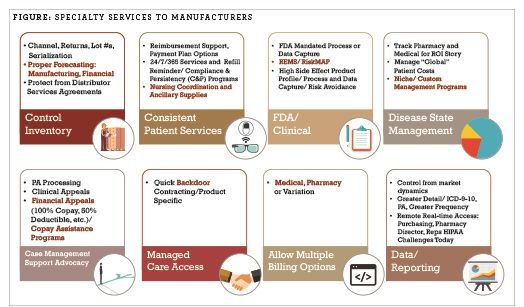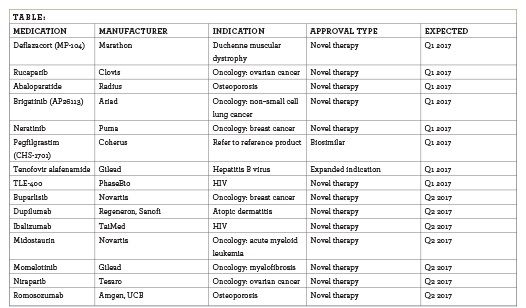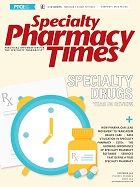Publication
Article
Specialty Pharmacy Times
New Product Opportunities-Having the Right Stuff to Win the Game
Managing the complex environment of specialty products must be both strategic and tactical if you want to compete.
We are currently in the heart of the pro and college football season, so it’s time for some gridiron metaphors. This December edition of Specialty Pharmacy Times® (SPT®) crosses the goal line and into our seventh year. We continue to build our team and playbook, including our annual end-of-the-year new drug approval series.
This recurring feature is authored by Stacey Ness, PharmD, RPh, CSP, MSCS, AAHIVP, a leader at Managed Health Care Associates, Inc and contributing editor to SPT®, and her colleague, Ruby Mhajan, RPh. The pipeline of specialty products is robust, and each product approval has a story and opportunity built around it. The approach to managing the complex environment of specialty products must be both strategic and tactical if you want to compete, and each product has challenges and subsequent opportunities buried within them.
It takes hard work and thoughtful preparation to come up with the right game plan to ensure the best possible patient outcome. Each product requires a unique strategy, and frankly, that’s why we call it “specialty.”
The Rule Book
Essentially, there are 2 supply chain streams in specialty: open and limited. Although open distribution products create access to revenue opportunities, a specialty pharmacy may need to dig a little deeper with manufacturers to be compensated for services and data in exchange for the value manufacturers subsequently return to pharmacies and patients.
Opportunities do exist, just ask around. Are you participating in any business development efforts or attending the right conferences to engage, such as NASP, Asembia, or sPCMA?
Limited distribution products, as a rule, have services built in to their agreements. When picking their roster of network providers, manufacturers should be running the right drills and exploring all of the ways to fill the gaps with their products to ensure they have the right mix of players on the field. Also, they should make sure their bench has the right players in case there is a need to have a stronger lineup.
Launch planning in the preseason, prior to a drug is approved by the FDA, is key. Having a process to statistically measure the right performance and objectively score the best roster is important, but equally important is having intuition and experience. Which leads us to the question: does your specialty pharmacy have the right stuff to compete and deliver value to get you in the game?
We are well into the era in which a significant number of approvals will potentially be offered to a limited number of specialty pharmacies. To have a chance, it is critical that specialty pharmacies have an optimal game plan in place.

Building the Value Proposition for Specialty
The highly-customizable platform that specialty provides to manufacturers is very dynamic, and depending on the nuances of the product, there are many lineups (services) that can be deployed. In the figure above, I’ve detailed 8 distinct areas, all of which can stand on their own in providing value to supporting a specialty product.
Within each of these 8 areas, there are many substantial opportunities. However they are employed, this mixture of services creates a power set of deliverables to help bring victory. Think of each of these areas as positions on the field akin to key members of your team.
With one player missing, gaps are created, and this weakness could expose your overall offering and potentially throw you for a loss. When they all come together, however, your offering can be unbeatable.
Selecting Your Disease State and Playing the Field
Many pharmacies have sub-specialized in key therapeutic areas and become experts at providing services for those products that treat specific disease states. Like physicians, pharmacy specialists strive to be the best at managing patients with their medications in specific disease states. Other pharmacies may, however, work across a portfolio of disease states with teams of specialists.
Lastly, others may be full generalists or multi-sport athletes. It’s been my observation that for at least the nonpayer-owned specialty pharmacies, success has come with a more defined focus on disease/product-specific services.
If specialty pharmacies aspire to be national in scope and reach the top of the power polls, concentrate on disease areas that fit the portfolio of expertise you can build with your teams. It is critical that you deploy account managers in the field, calling on both payers and prescribers to tell your story.
Locally managed specialty pharmacies can be powerhouses in and of themselves and often have the advantage of geography and face-to-face relationships with providers that are in their specific markets, as referrals often come from having those personal relationships in place. Think of when you see your doctor and need a referral to a specialist.
They are more likely to point you to a colleague with whom they’ve worked side by side; well, the same can go with a specialty pharmacy.
Building the Game Plan One Product at a Time
Football has become the American pastime. We see coaches roaming the sidelines with their laminated game-plan cards, supplemented by the players on the field having their share of that plan on their wrist, such as a quarterback having a cheat sheet of the playbook.
Take that same strategy and use it to build your pharmacy’s game plan. Look at our 2016 year-in-drug approvals article in this issue to see how a team looks at a scouting report to prepare for the next game. The report provides key insights into what your game plan should look like.
Of course, it takes more than a plan. It takes action and having the confidence to call an audible when you see the need to do so.
Planning Future Draft Picks
Great teams do long-range planning for the future, scouring the ranks of college football all-stars to improve their team year-over-year. Likewise, specialty pharmacies can keep track of future approvals by monitoring the FDA website, reading press releases, using word-of-mouth, having the right relationships, and, of course, reading SPT®.

Above is a list of potential approvals slated for 2017. Some will make it, many will not. So the question is, will you be ready? Are you talking to these players and building your scouting reports?
Practice, Practice, Practice
Vince Lombardi said, “The price of success is hard work, dedication to the job at hand, and the determination that whether we win or lose, we have applied the best of ourselves to the task at hand.” The shift from traditional to specialty products is the future of our profession. The changing portfolio of products is creating new opportunities.
We have created SPT® to be the key resource for all who want to participate. If it were easy, it would not be called “special.” 
Specialty Pharmacy Times
® is dedicated to the business and profession of specialty pharmacy. We are the source of the most current and complete information in the space. Our
Industry Guide
can provide the resources you need at SpecialtyPharmacyTimes.com/industryguide.
Specialty Pharmacy Times
® is THE journal fully committed to setting the publication standard through peer-written and reviewed articles focusing on the “real world” of specialty pharmacy practice. We invite you to enjoy this issue and pass it on! We welcome your feedback on this topic and on any topics you would like us to cover in future editions of
Specialty Pharmacy Times
®. Please reach out to me at dsteiber@pharmacytimes.com. We also encourage you and your colleagues to subscribe to this unique journal, receive the e-newsletter, and sign up for the free app by logging on to SpecialtyPharmacyTimes.com.
About the AuthorMR. STEIBER operates a consulting practice and is responsible for commercial operations, trade-supply chain strategy development including 3PL selection, regulatory oversight, and “operationalizing”organizations. Mr. Steiber has served in several senior positions in pharmacy, distribution, and industry over the course of his 40-year career. Mr. Steiber is a licensed pharmacist in Texas, Washington, California, and Pennsylvania. He is affiliated with several professional associations and publications and a frequent speaker on behalf of many professional organizations. Mr. Steiber graduated from Washington State University College of Pharmacy. He has participated in a variety of postgraduate programs in law and business development/marketing at Harvard University and Northwestern University. Mr. Steiber currently resides in Highland Village, Texas.







